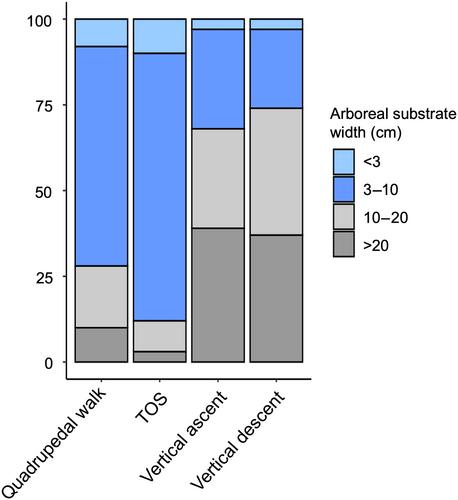Sex differences in positional behavior of chimpanzees (Pan troglodytes schweinfurthii) living in the dry and open habitat of Issa Valley, Tanzania
Abstract
Objectives
Many early fossil hominins are associated with savanna-mosaic paleohabitats, and high sexual dimorphism that may reflect differences in positional behavior between sexes. However, reconstructions of hominin behavior and the selective pressures they faced in an open habitat are limited by a lack of studies of extant apes living in contemporary, analogous habitats. Here, we describe adult chimpanzee positional behavior in the savanna-mosaic habitat of the Issa Valley, Tanzania, to test whether Issa chimpanzees show larger sex-differences in positional behavior than their forest-dwelling counterparts.
Materials and Methods
We quantified and compared adult locomotor and postural behavior across sexes (6 females, 7 males) in the riparian forest (closed) and miombo woodland (open) vegetation types at Issa Valley (13,743 focal observations). We then compared our results to published data of chimpanzee communities living in more forested habitats.
Results
Issa females and males both spent less time arboreally in open vegetation and showed similar locomotor and postural behavior on the same substrates, notably using a high level of suspensory locomotion when arboreal. Females were, however, more arboreal than males during locomotor behavior, as well as compared with females from other communities. Issa males behaved similarly to males from other communities.
Conclusion
Results suggest that open habitats do not elicit less arboreal behaviors in either sex, and may even select for suspensory locomotion to effectively navigate an open canopy. An open habitat may, however, increase sex differences in positional behavior by driving female arboreality. We suggest this is because of higher energetic demands and predator pressures associated with open vegetation, which are likely exaggerated for reproducing females. These results have implications for the interpretation of how sexual dimorphism may influence reconstructions of hominin positional behavior.



 求助内容:
求助内容: 应助结果提醒方式:
应助结果提醒方式:


